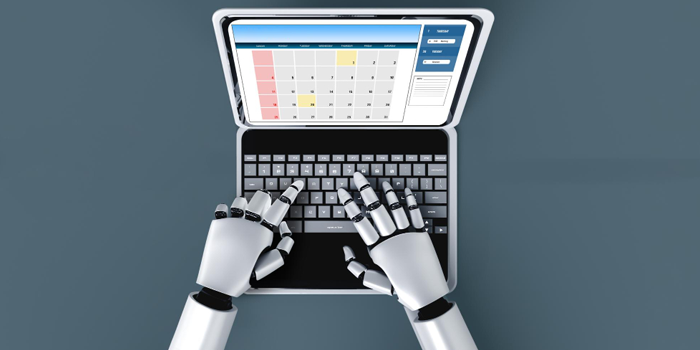Today, customers are spoiled for choice, which makes a responsive and rapid support experience non-negotiable. With this in view, automated ticket resolution is completely changing customer service and support operations.
In this blog, we will go deep into automated ticket resolution techniques that optimize your service operations and ensure a seamless client experience.
Understanding Automated Ticket Resolution
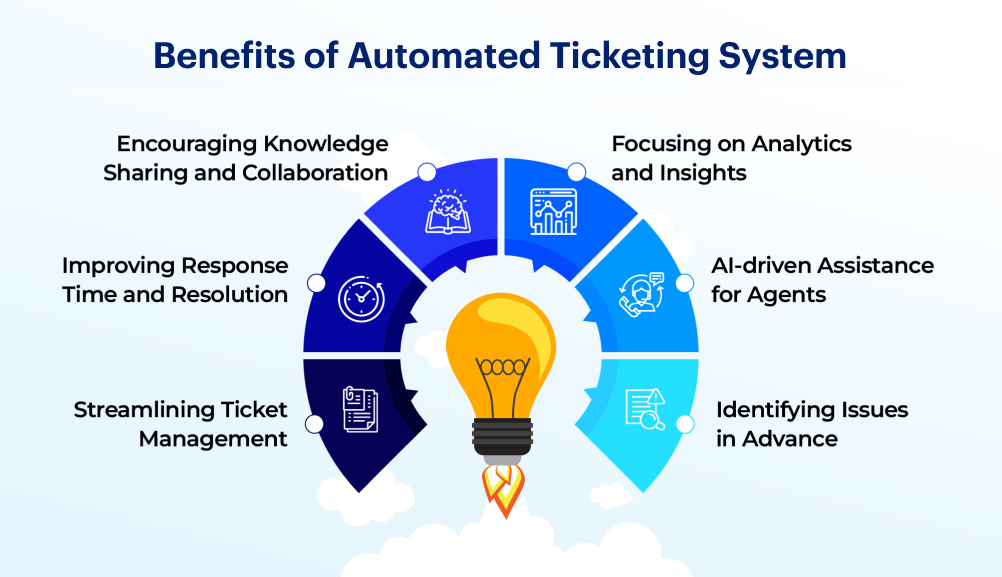
An automated ticketing system uses AI and other automation tools to handle customer support tickets. After clients submit their issues, it automatically classifies, orders, and handles support requests according to preset criteria and machine learning techniques for resolution.
In addition, it tracks and stores the progress of each ticket until the issues are resolved to ensure that none are left behind. This leads to higher productivity, quicker reaction times, and happier customers.
Key Strategies for Fail-Safe Automated Ticket Resolution
Let’s take a look at the following strategies for fail-safe automated ticket resolution:
1. Natural language processing integration
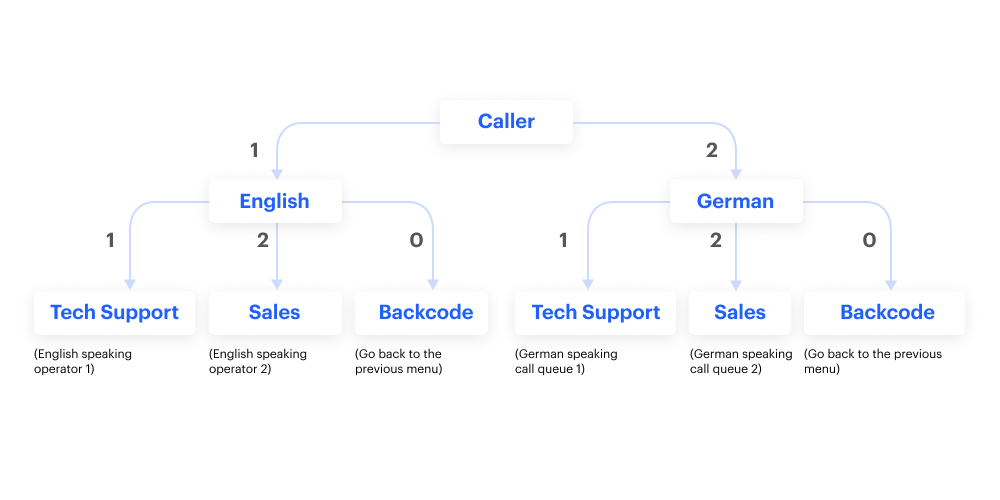
Natural Language Processing (NLP) allows automated ticket resolution systems to understand, interpret, and react to human language. To build a system that is fail-safe:
- Use sentiment analysis to determine how emotionally charged consumer encounters are. Knowing if a consumer is irate or satisfied allows the system to rank and elevate problems that need quick human involvement.
- Enhance NLP with contextual understanding capabilities. This reduces the likelihood of misunderstandings by ensuring the system comprehends not only the keywords but also their context.
- Use continuous learning models, which get better with time by taking lessons from previous encounters and resolutions. The system is therefore more dependable and accurate.
Select NLP systems that provide extensive tools for sentiment analysis and contextual comprehension. To maintain the model’s accuracy, introduce new interactions into the training data on a regular basis.
2. Human-AI collaboration
While automation aims to decrease human involvement, a hybrid strategy ensures accuracy and dependability.
- Set up a structure wherein AI answers simple questions and human agents address more complicated ones. This strikes a compromise between the requirement for a customized human touch in intricate situations and efficiency.
- To improve the system’s problem-solving skills, train AI with human expertise by routinely adding ideas and comments from seasoned human agents to the AI models.
- To prevent omissions, clearly state when and how to escalate tickets to human agents.
Use platforms that enable smooth handoffs between AI and human operators and support hybrid systems. Regularly review and update escalation rules to ensure they comply with the latest support policies.
3. Knowledge base integration
Maintaining an updated knowledge base is essential for effective ticket resolution.
- As new information and solutions become available, include a real-time, updated, and dynamic knowledge base. This ensures that the system has the most recent data available.
- Use AI in your self-learning systems to examine closed issues and instantly add new answers and best practices to the knowledge base.
- Create a knowledge base that is simply navigable so that human agents and the automated system can locate pertinent information quickly.
Put knowledge base systems like SharePoint or Confluence into use; they allow for real-time updates and self-learning AI capabilities. Make sure both AI and human agents can easily use the interface.
4. Ticket categorization and routing
Routing and classification ensure that the right resources handle tickets.
- You can use machine learning algorithms to automatically classify tickets based on their urgency and content. This speeds up reaction times and reduces manual errors.
- Using AI analysis and preset criteria, intelligent routing systems route tickets to the appropriate department or agent. This increases resolution effectiveness and optimizes resource use.
- Create feedback loops in which the system modifies its algorithms over time to increase accuracy and learn from routing errors.
Utilize AI-powered advanced routing and categorization ticketing systems, such as Jira. Examine routing options on a regular basis and use input to improve algorithms.
5. Proactive issue resolution
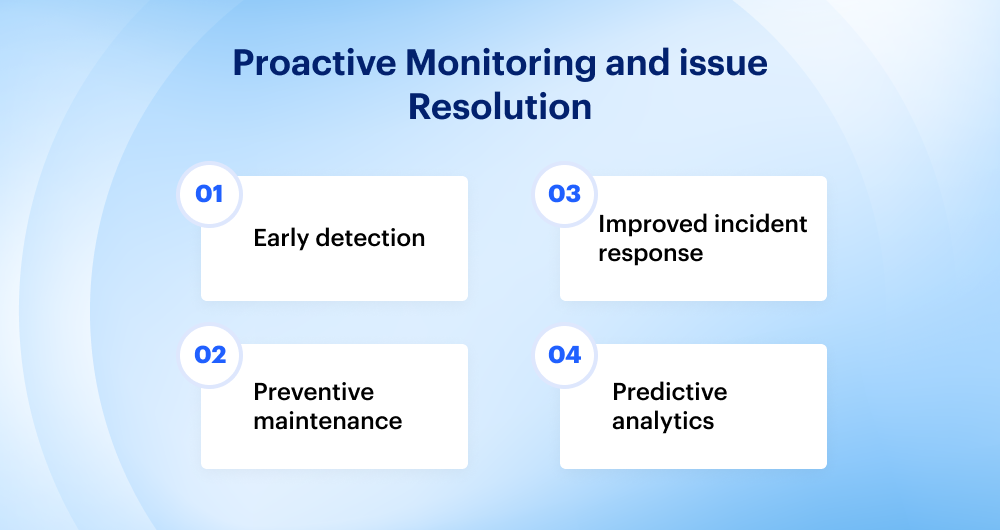
Delivering client happiness requires looking out for problems and resolving them before they become worse.
- Predictive analytics uses past data and present patterns to predict possible problems. The system can proactively address issues before they escalate.
- Create automated mechanisms to notify clients of known problems and provide anticipated resolution times, thereby reducing their frustration.
- To avoid typical problems, implement preventative maintenance plans where the system arranges upgrades and check-ups on its own.
Use predictive analytics tools to evaluate past data and forecast future problems. Connect with consumer communication platforms to automatically provide changes and notifications.
6. Personalized customer interactions
Personalization increases consumer satisfaction and fosters loyalty.
- Create thorough client profiles, including past contacts, preferences, and purchase history. Use this information to personalize answers and fixes.
- Create adaptive response systems that customize language and recommendations based on sentiment analysis and the customer’s profile.
- To improve and customize the automated resolution process, take regular requests for and integrate consumer input.
Use CRM helpdesk solutions like LeadSquared that allow for in-depth customer profiling and connection with automated ticketing systems. Put adaptive response mechanisms into place to guarantee customized encounters.
7. Security and privacy measures
Protecting client data should be your top priority.
- To prevent hacks and unauthorized access, encrypt all client data from start to finish.
- To foster confidence and stay out of legal hot water, make sure the automated system follows pertinent data protection laws, including the GDPR and CCPA.
- Find and fix possible threats by routinely doing vulnerability assessments and security audits.
Use platforms that provide extensive data encryption and compliance solutions to implement security measures. Organize routine vulnerability scans and security audits.
8. Scalability and flexibility
Scalable and flexible systems are able to adjust to evolving requirements.
- Create the system with a modular architecture to provide simple feature integration and scaling without interfering with current operations.
- Make use of cloud-based platforms to provide easy scaling and access to cutting-edge resources and features.
- Offer customized choices so that companies can configure the system to fit their particular requirements and procedures.
Utilize modular and scalable cloud-based technologies such as Google Cloud Functions or AWS Lambda. Ensure that the system adapts to the company’s needs.
9. Performance monitoring and analytics
Ongoing observation and evaluation ensure the best performance from the system.
- Create dashboards that provide insights into important performance indicators such as system uptime, customer satisfaction ratings, and ticket resolution times.
- Produce analyses that automatically point up patterns, performance bottlenecks, and places that need work.
- Test several system setups and strategies (A and B) to determine the most effective ticket resolution methods.
Real-time dashboards and automatic reporting capabilities from monitoring technologies should be installed. To keep the system optimized, use A/B testing tools.
10. Training programs
The best use of automated systems is dependent on training.
- Continuously educate human agents on how to use and interact with automated technology. It guarantees smooth cooperation between humans and AI.
- To improve the AI models’ capacity to solve problems, constantly train them with fresh data, situations, and input.
- By teaching consumers how to make good use of self-service options, you can lower the number of tickets and enhance their overall experience.
Create thorough employee training programs. Update AI models frequently with fresh training data and provide clients with educational materials.
Implementing Fail-Safe Strategies
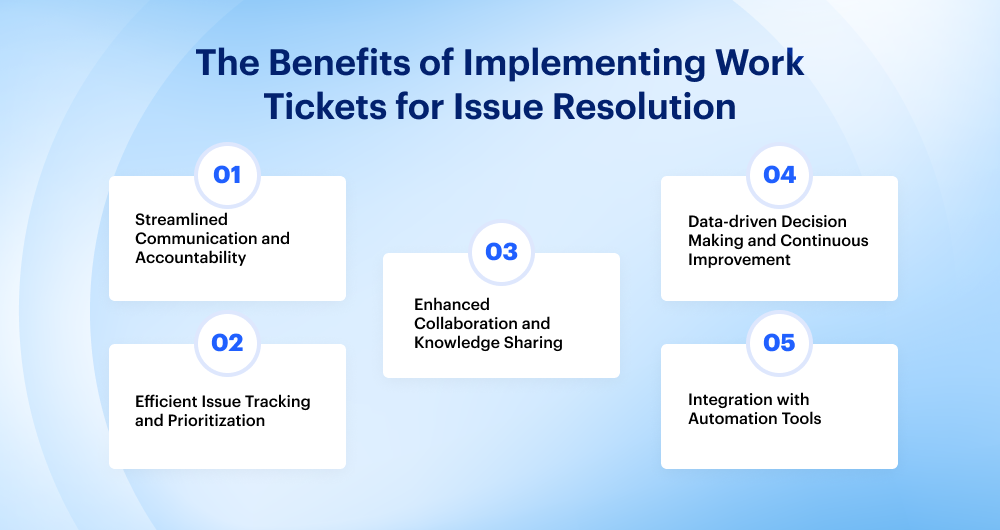
Follow this general plan to implement these effective strategies:
Step 1: Define objectives and requirements
Make it very evident what your automated ticket resolution system needs to do. Find key performance indicators (KPIs) like cost savings, customer happiness, and resolution time. With OKR frameworks, assign goals and monitor your development.
Step 2: Choose the appropriate technology stack
Choose a technological stack that interfaces with current systems and supports sophisticated natural language processing and machine learning. Verify technology stacks for suitability with your requirements using proof-of-concept projects and vendor comparisons.
Step 3: Build a sturdy knowledge base
Organize a vast, dynamic, easily accessible information library that is updated every day. Regularly review and update the knowledge base by utilizing content management tools.
Step 4: Use advanced NLP and AI models
Combining sophisticated NLP and AI models will allow you to precisely understand and answer consumer questions while continuously improving them. Update models frequently with fresh data and adjust as needed.
Step 5: Create an AI and human hybrid workflow
Establish a hybrid workflow that utilizes AI for routine tasks and human agents to tackle complex problems. Make frequent tests and efficiency refinements of workflows using workflow automation technologies.
Step 6: Integrate personalized and proactive solutions
Develop technologies that will proactively find and fix problems, customizing communications according to client information. For individualized outreach, include CRM.
Step 7: Ensure security and regulation compliance
Ensure adherence to data protection laws by investing in robust security protocols. Audit periodically. Plan recurring compliance and security audits.
Step 8. Scale and modify
Scale and adapt the system using a modular design and cloud-based solutions. Adopt the microservices architecture to enhance flexibility.
Step 9: Track and improve performance
A/B testing can help you optimize, and real-time dashboards and automatic reports can help you track performance continuously. To improve setups, run A/B tests frequently.
Step 10: Offer In-depth instruction
Invest in AI models and human agent training programs and inform clients about self-service possibilities. Plan webinars and workshops to keep everyone updated.
Conclusion
Automated ticket resolution can significantly enhance support and customer service operations. By implementing these fail-safe measures, companies may build reliable, effective, and client-focused systems. These tactics increase operational effectiveness, client loyalty, and happiness.
LeadSquared is a service CRM platform that goes beyond a simple help desk. Its end-to-end ticket management streamlines your customer support journey from beginning to end.
Contact us today to learn more about how you can optimize your customer support offerings.





